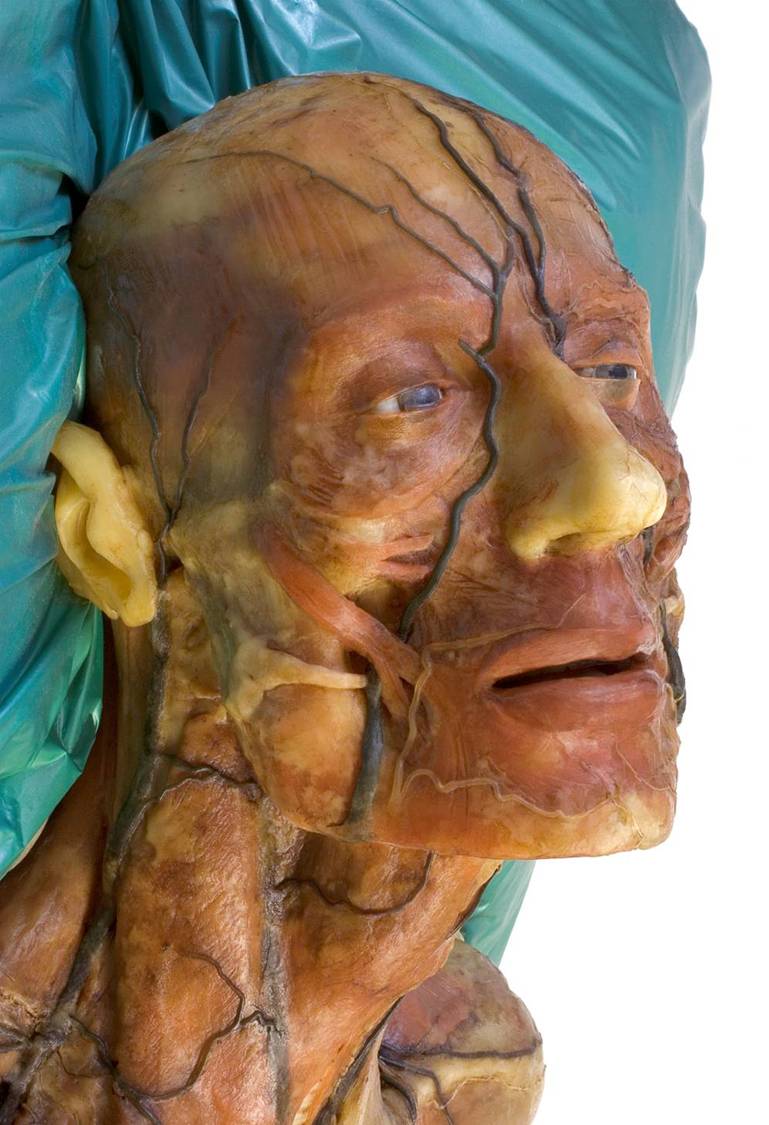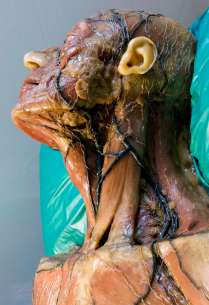The Museum and Historical Library of Biomedicine - BIOMED was established in 2006 as a new addition to the old Museum of Human Anatomy (1). The origins of this institution date back to the 17th century, when wax casting and artistic anatomy started at the University of Parma (called at the time Studium Farnesianum)
Historical documents suggest that wax reproductions of the human body were likely modelled at Parma during the first half of the 1600 by the ceroplast, Michele Corti, working in an ancient laboratory for wax casting (so called Gabinetto Anatomico e Patologico in Cera). At present, none of the ancient wax handcrafts believed to be produced by Corti have been identified with certainty, and historiographic studies on his almost unknown activity as anatomical ceroplast are in progress by the Scientific Director of the Museum in collaboration with other national institutions (2,3). Nevertheless, the documented presence of the Gabinetto Anatomico e Patologico in Cera (wax laboratory) raises the possibility that anatomical wax modelling was already present in Parma half a century before many other national Universities. Only much later, at the end of 1600, the scientific community unanimously recognized the research and teaching values of anatomical wax casting through the work of artists like Gaetano Giulio Zumbo (1656-1701), Ercole Maria Lelli (1702-1766) and Clemente Susini (1754-1814), all acting in Italian Universities other than Parma. Their wax preparations were appreciated throughout Europe and recognized as undisputed icons of scientific and artistic perfection and beauty (4-6). However, it is reasonable to consider Michele Corti one of the founders of anatomical wax modelling in Italy, probably preceeded only by Ludovico Cardi, otherwise known as Cigoli, who worked in Florence during the second half of the 16th century
Between 1776 and 1820 the wax laboratory (Gabinetto) was headed by the Professor of Anatomical Ceroplastic, Andrea Corsi, who moulded three full-sized statues of the human body, as reported in documents kept in the Archive of the old "State of Parma". Two of these statues, showing the male body, were re-discovered in 1949 by Professors Gaetano Ottaviani (Director of the Human Anatomy Department from 1947 to 1972) and Giacomo Azzali (Director of the Human Anatomy Department from 1972 to 2000). Currently, these two statues can be seen in the Museum, preserved under glass and wood coffins maintained at constant humidity and temperature. One exhibits parts of the arterial system and superficial and deep muscles. The other displays the superficial lymphatic system, including afferent and efferent vessels, and inguinal and jugular lymph nodes (Figures 1 and 2).
The horizontal position of the body with a hyperextended neck and partly rotated head is reminiscent of other wax models provided in 1784 by the Florentine ceroplast, Clemente Susini, for the Josephinum Museum of Wien. These latter models were prepared upon request of the Austrian Emperor, Joseph II, and can be seen at the Institute for the History of Medicine of the University of Wien. The influence of Susini is further supported by the description of a third statue, that has not yet been recovered but historically described in the documents mentioned above as Venus with an exteriorized viscera and pregnant uterus. Since a very similar wax statue detailing the visceral lymphatics is retained at the University Museum of "Palazzo Poggi" in Bologna, prepared in Florence by Clemente Susini under the supervision of the anatomist Paolo Mascagni (4, 5), it is reasonable to believe that all three statues modelled by Andrea Corsi were influenced by Susini's work. Susini's laboratory produced more than 2000 anatomical wax sculptures during 40 years of activity (7), inspired by Paolo Mascagni's studies on human lymphatics (2, 3). Due to their outstanding artistic quality and uniqueness, the two statues retained in Parma have been recently studied by experts of the Institute for Artistic and Cultural Goods of the Emilia-Romagna region (2).
The successor of Michele Corsi was Iacopo Antonio Baratta, who under the guidance of Pietro Pasquali (1785-1842), Professor of Anatomy and Physiology at Parma University, created a number of anatomical wax models between 1830 and 1836 including muscles, blood vessels and viscera. Unfortunately, they may all have been lost. Since, the activity of the Gabinetto ceased. However, starting with the end of 1800's, anatomical wax modelling resumed in Parma through the activity of the anatomist, Lorenzo Tenchini, a follower of Cesare Lombroso's doctrine on forensic anthropometry. The new era of the anatomical ceroplastics continued up to the end of 1900 as a result of pioneering studies on the ultrastructure of lymphatic vessels by the anatomists, Gaetano Ottaviani and Giacomo Azzali.




